Gran Teatre del Liceu Opera house in Barcelona
Barcelona's renowned ornate Grand Opera house established 1837. Modernised and rebuilt 1999 after a fire. Read about history and live shows
About Liceo Theatre Grand Opera House
The Gran Teatre del Liceu Liceu theatre in La Rambla, is one of the most important opera houses in Europe and Catalonia's premier opera house. Liceu Thetre is comparable to the covent Garden theatre in London.
The most important works of classical music have been performed by the greatest singers of the past two decades. Stars like Domingo, Pavarotti, Caballe, Callas and Tebaldi have performed in Liceo Theatre.
- 1837: at the instigation of Manuel Gibert, a battalion of the armed citizen militia (National Militia) formed a musical conservatory in the unused monastery of Montsio (What is now the shopping street of Portal del Angel. Their first show premiered on 21 August 1837.
- 1838: the project added a theatre school aimed at competing with the Maria Cristina Music and Declamation Conservatory in Madrid, thus the Liceo Filarmónico Dramático Barcelonas (Barcelona Dramatic and Philharmonic Lyceum) came into being.
- 1844: Joaquim De Gispert i Anglí was entrusted with finding a new location to construct a building that would house a teaching professorship and a theatre. The space that he chose was the former monastery of Los Trinitarios, on the Rambla and the building was formally purchased on 9 June 1844.
- A new Sociedad Auxiliar de Construccion (Auxiliary Construction Society) was created to raise the rest of the money in exchange for ownership of other spaces of the building. Unlike other European cities, where monarchs had contributed to the construction of the great opera houses, the Liceu was built from private contributors who owned seats and boxes, which meant that part of the Teatre was owned by just a few families called Sociedad del gran teatre del Liceu (society of owners).
- 1845: the first stone was laid. Architect Miquel Garriga i Roca was in charge of the construction and directed the works until 1846, when he was replaced by Josep Oriol Mestres i Esplugas.
- 1847: 4th of April, Easter Sunday, the Gran teatre del Liceu opened with a programme including a symphony, a play, an Andalusian dance and a cantata in Italian. The first opera, Anna Bolena, came a few days later, on 17 April.
- 1855: The owners society bacame the sole manager of the Liceu Theatre building when it seperated from the conservatory del Liceu. Liceu Theatre has the largest capacity in Europe, seating an audience of up to 3,500, and the stage was equipped with the most modern facilities and technology at the time.
- 1861: the first theatre only lasted 14 years. On 9 April a fire that broke out in the tailor's shop spread rapidly and completely destroyed the hall and the stage. The theatre was in ruins and the owners unanimously decided to rebuild it by sharing the costs among all the shareholders and people with interests in the Theatre.
- 1862: under the guidance of the architect Josep Oriol Mestres i Esplugas the theatre was rebuilt in a year, reopening in April with an opera.
- 1893: 7 November, during the opening performance of the season, in the second act of Guillaume Tell (William Tell), the anarchist Santiago Salvador Franch tossed two Orsini bombs into the stalls. Only one exploded, killing 20 people and causing a large number of injuries. The Liceu closed its doors and did not resume its artistic activity until 18 January 1894, with a series of concerts.
- 1939: at the outbreak of the Spanish Civil War, when the Theatre was nationalised by the Government of Catalonia. The Franco regime restored ownership of the Theatre to the owners society and in April Joan Mestres i Calvet resumed artistic activity and began organising the 1939/40 winter season , opening on 9 December 1939 with an opera.
- late 1970s: the financing system of private ownership of boxes and seats became obsolete compared to other great opera houses of Europe. After the death of the last businessman, Joan Antoni Pàmias, in 1980, the regional Government of Catalonia recognised the historical and cultural value of the institution so issue a decree to create a consortium to finance the theatre.
- 1994: the fire of 31st January garnered great public sympathy and the Board of Trustees unanimously agreed to rebuild the Liceu on the same site. The project was entrusted to the architect Ignasi de Solà-Morales i Rubió and was joined by Xavier Fabré i Carreras and Lluís Dilmé i Romagós. During constructions, performances of the theatre were held in other venues across the city such as the Palau de la Musica Catalana, the Teatre Victoria, the Mercat de les Flors, the Theatre Nacional de Catalunya, the Palau Sant Jordi etc.
- 1999: The new Theatre opened on 7 October with a performance in a modernised theatre building whose appearance was faithful to the previous one but was endowed with advanced technical infrastructure.
Gran teatre del Liceu History
Image Gallery for Liceo Theatre Grand Opera House
Click on any of the 3 images to open full screen gallery player
Visiting Liceo Theatre Grand Opera House
Pre covid, the Liceo Theatre offered a one hour guided tour of the auditorium and various lounges for 19 euros or an 80 minute tour for 25 euros that included the backstage area as well.
Note: the guided tours are currently not offered and the only way to visit the theatre is to see a live show.
See the what on & subscriptions tab of the Liceo Theatre website.
What to take with you for Liceo Theatre Grand Opera House
Bicycle anchorage points by Liceo Metro station exit. Bicycles in this part of town have a high probability of being stolen so do not take your eyes off it.
Liceo Theatre Grand Opera House Summary of Prices
Getting to Liceo Theatre Grand Opera House
Address: La Rambla 51-59, Barcelona. 08002
The nearest TMB METRO is Liceo on the green (L3) metro line. Use a T-Casual or Hola-Barcelona travel card.
Map of Liceo Theatre Grand Opera House
Weather for Barcelona
Where to stay overnight in the Gran Teatre del Liceu
Things to do near Liceo Theatre Grand Opera House
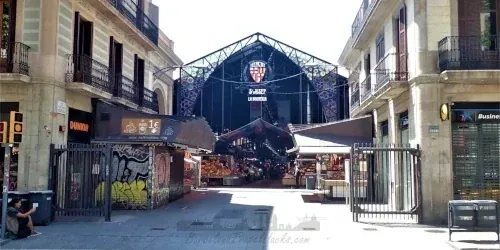 METRO
METROLa Boquería Sant Josep Food Market on Las Ramblas
The oldest and most famous food market in Barcelona located in Raval and las Ramblas. Market is surrounded by small tapas bars and restaurants
Read more >
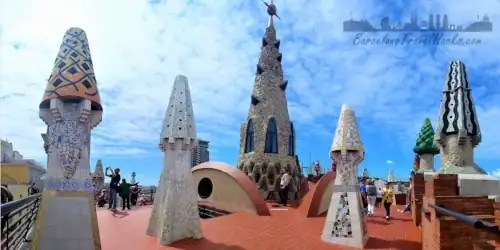 METRO
METROPalau Güell Antoni Gaudí castle themed Palace
Eusebi Güell mansion museum by architect Antoni Gaudí & restored in 2011. Tickets and info for visits. UNESCO World Heritage Site
Read more >
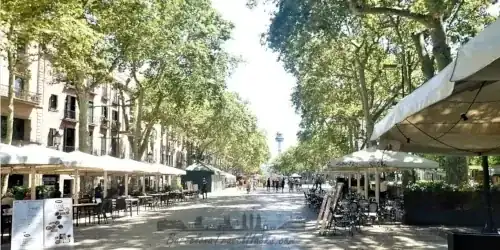 METRO
METROLas Ramblas Boulevard with Living Statues and flower stands
Tree lined pedestrian street running between Raval & Gòtic neighbourhoods, from Barcelona Port to Plaza Catalunya, Known for its living statues & kiosks
Read more >
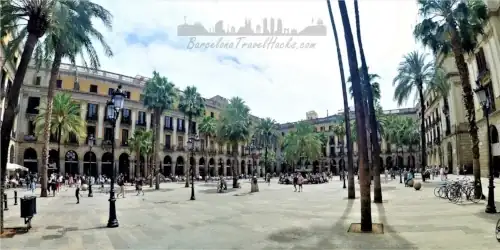 METRO
METROPlaça Reial Grand square with Gaudí Lamp Posts
Grand Plaza on site of former monastery, built 1848. Known for nightlife, restaurants, Antoni Gaudí lamp posts & Font de les Tres Gràcies fountain
Read more >
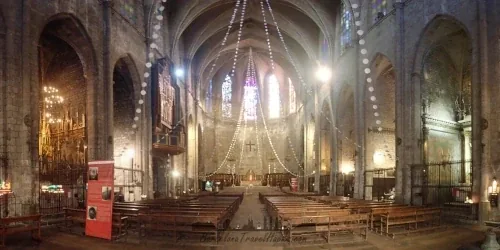 METRO
METRO